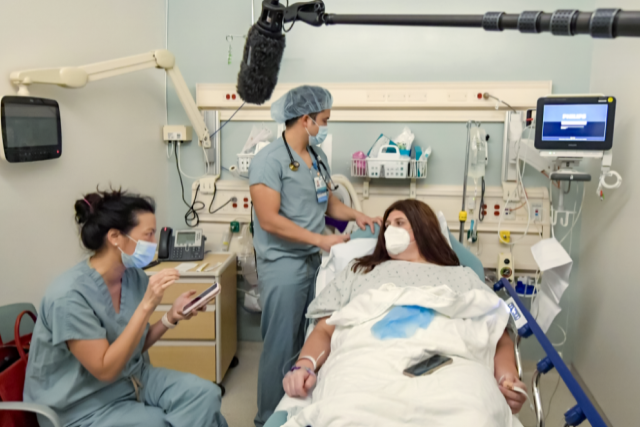
Gender-affirming facial feminization surgery leads to improved mental health and increased quality of life for transgender patients, a new study has found.
The , published July 4 in the journal Annals of Surgery, is the first to quantitatively measure psychosocial outcomes of facial feminization surgery in patients before and after the procedure, says Justine Lee, MD, PhD, the Bernard G. Sarnat Endowed Chair in Craniofoacial Biology at UCLA Health.
“I always felt like we were doing some good, but it’s nice to see that real difference in patients,” Dr. Lee says.
Access to facial feminization surgery under U.S. health insurance coverage has been more limited than other gender-affirming surgeries, in part because of a lack of data on psychosocial outcomes, Dr. Lee says.
“Frequently, these procedures are classified as cosmetic, due to the absence of evidence showing quality of life improvements,” she says. “Our findings have the potential to change health insurance policies for the better for transgender patients.”
What is facial feminization surgery?
Gender-affirming surgery aims to address both internal and external perceptions of gender, she says.
Internally, an individual may experience distress if their physical characteristics don’t match their gender identity — a feeling of gender dysphoria. Externally, they may be constantly misgendered, which reinforces that they don’t look the way they feel.
Facial gender-affirming surgery refers to a collection of procedures designed to feminize or masculinize the face of a person with facial gender dysphoria. It can include various changes to reshape both soft tissue and bony structures.
Millimeters of difference separate forehead, brow and nose shapes in masculine and feminine faces, Dr. Lee says. For instance, the forehead and brow bone protrude about 4 millimeters more on male faces than female ones, she says.
Male and female hairlines are shaped differently. Brows sit lower on male faces. Male and female chins are different, with the male chin more square and the female more tapered. Male nasal bones are wider. The angle from nose to lip is different on male and female faces.
Of course, not every patient needs every modification.
“It’s really based on the patient and what they’re seeing, what is really bothering them and causing them to be either misgendered or internally feel those feelings of dysphoria,” Dr. Lee says.
Studying psychological outcomes of surgery
Previous studies of facial feminization surgery looked more at patient satisfaction than validated metrics of mental health and quality of life, Dr. Lee notes.
For this study, Dr. Lee and her team took a different route. They investigated 11 measures from the National Institutes of Health’s Patient-Reported Outcomes Measurement Information System (PROMIS), which have been studied in thousands of Americans.
“We administered all 11 measures to patients of mine who were awaiting facial surgery or who had facial surgery,” says Dr. Lee.
Patients who had undergone surgery scored better in seven of the 11 measures — anxiety, depression, positive affect, meaning and purpose, social isolation and anger.
Dr. Lee says these results could help bolster understanding about the significance of facial feminization surgery across the country.
“This potentially could help more patients who are really in need — and maybe don’t live in California, where it’s a little bit easier — advocate for themselves, and other physicians to advocate for their patients.”
Learn more about the UCLA Gender Health Program.
Related:



